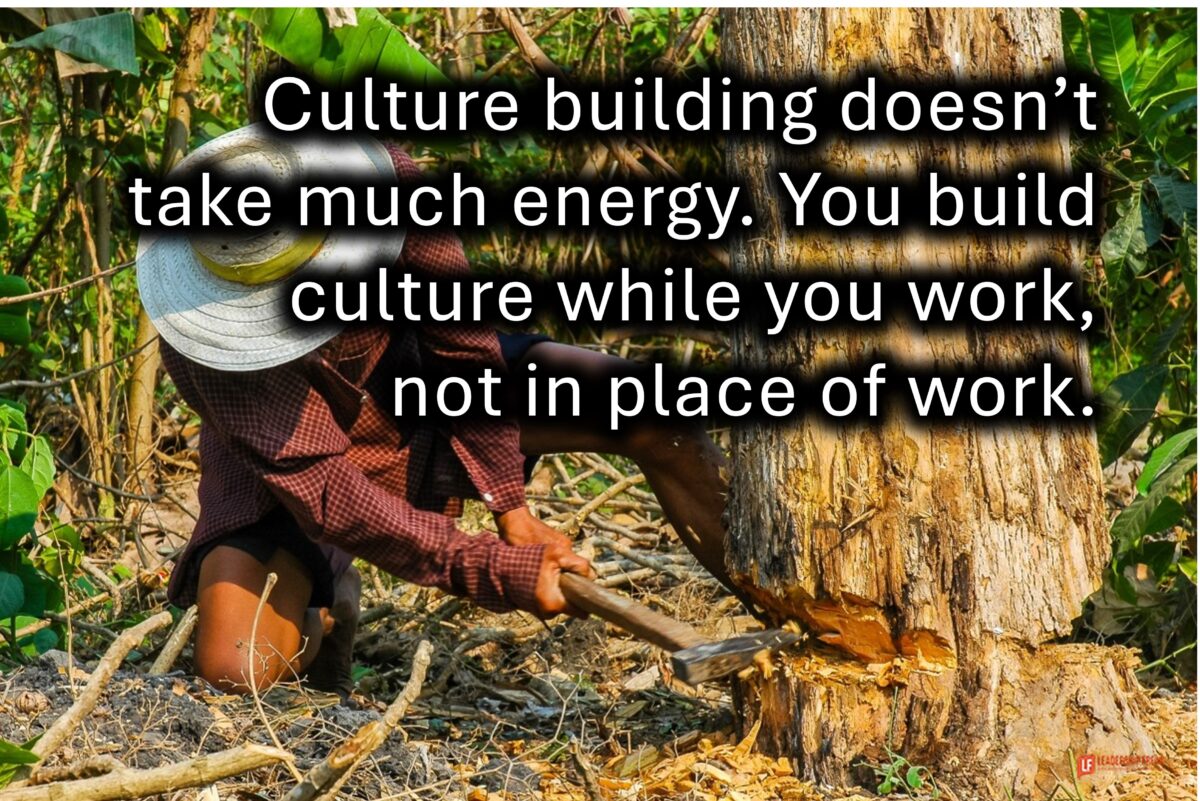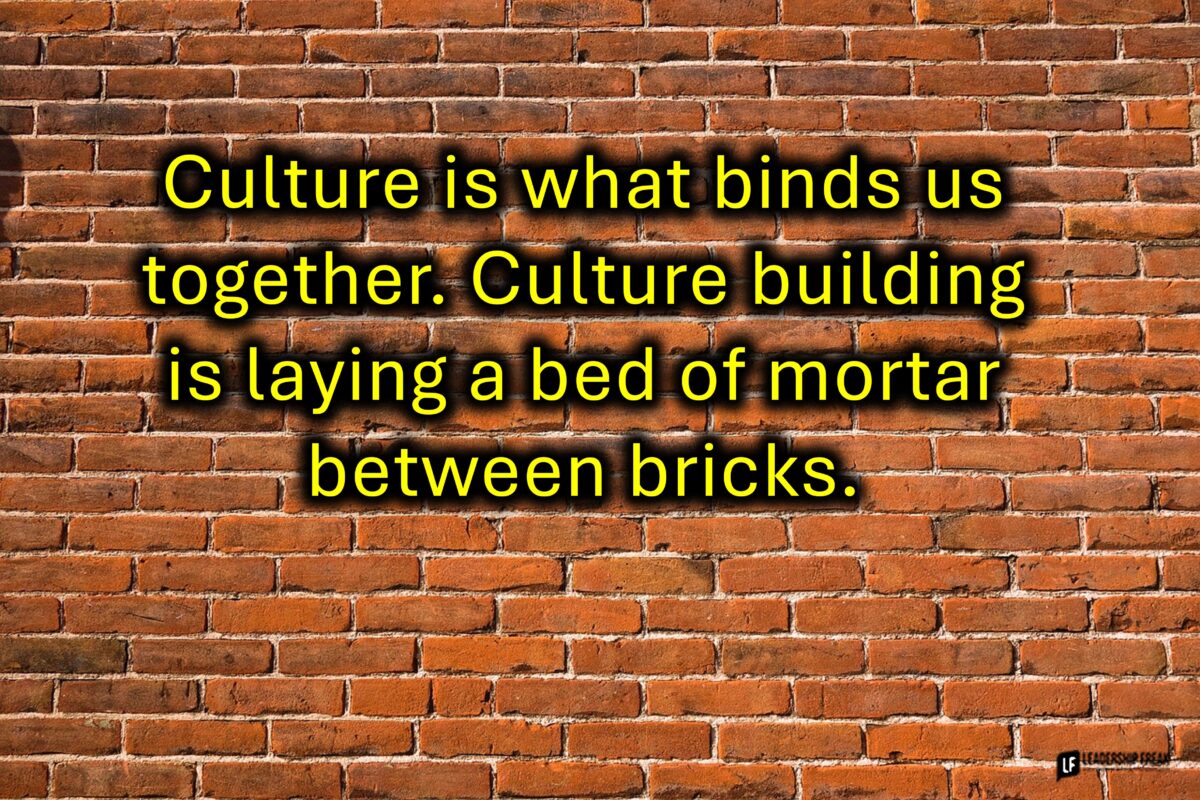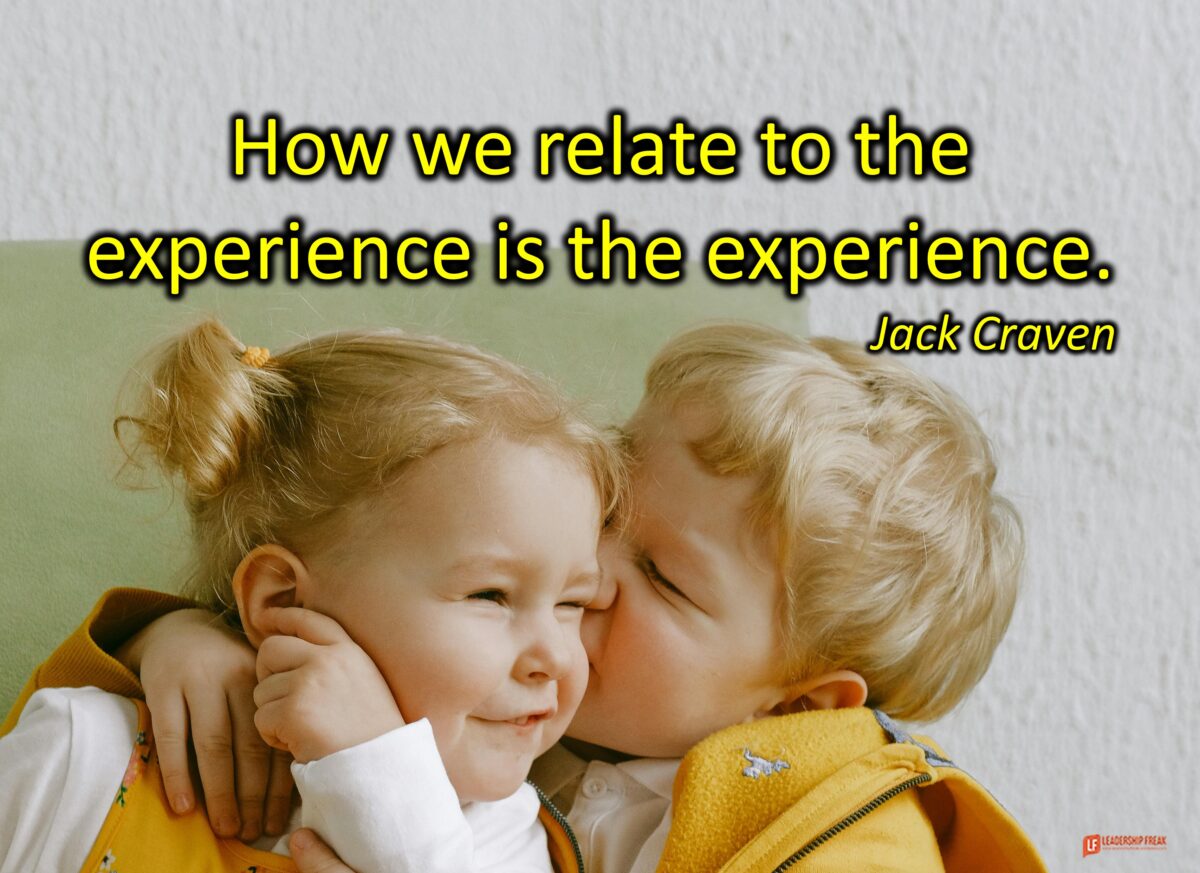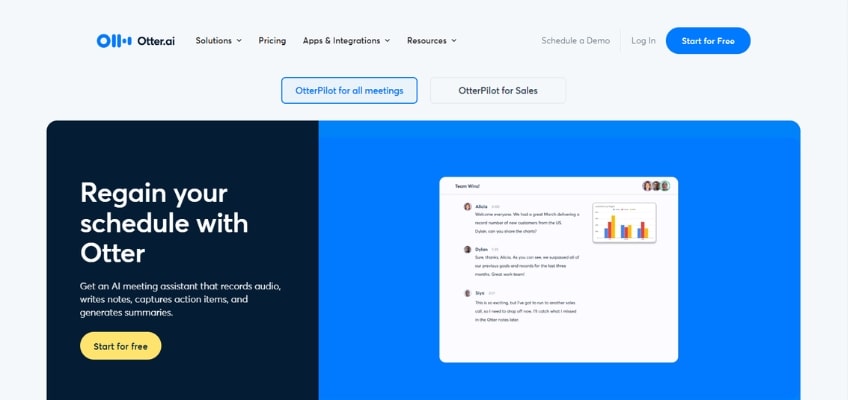Culture Building Demands Little Energy
Imagine energy is an ax. You get 100 energy swings every day. If you make two chops on 50 trees you ruin the forest. If you make 20 chops on five trees, one tree might fall. If you make 50 swings on two trees two medium size trees will fall.
Culture Building Demands Little Energy:
Culture building doesn’t take much energy. You build culture while you work, not in place of work. (The exemption to this is the training people might need to thrive within your culture.)
Suppose you aspire to a culture of service. When one lumberjane goes to get a drink she asks, “Would anyone like me to bring some water when I come back?”
A culture of ownership:
Suppose you aspire to a culture where every leader adopts a whole forest point of view. Tree harvesters think “our” success even while they work on their own team’s success.
When a tree starts to fall a lumberjack yells, “Timber,” to alert everyone else. All the leaders feel responsible for the success of all the teams. It’s “we” not “me”.
Lumberpeople ask “whole forest” questions. “I wonder how my work impacts your work?” Or “How can I help you swing your ax more effectively?” Or “Did you know we’re chopping down trees right behind your team?”
Application:
Ask the leadership team to determine five behaviors that express one aspect of the culture you aspire to build. Commit to live those behaviors every day for a month. After you live your culture for a month roll it out to middle-managers. In the third month roll it out to front line supervisors. After three months, choose another aspect of your culture and repeat the process.
Questions:
I suggest that culture building is done primarily while we work. What do you think?
What behaviors build the culture you aspire to create?
Still curious:
Yesterday’s post: Culture Building in the Real World
5 Essentials of Culture Building
The 8 Elements of Great Company Culture | Great Place To Work®
Like this:
Like Loading…






















